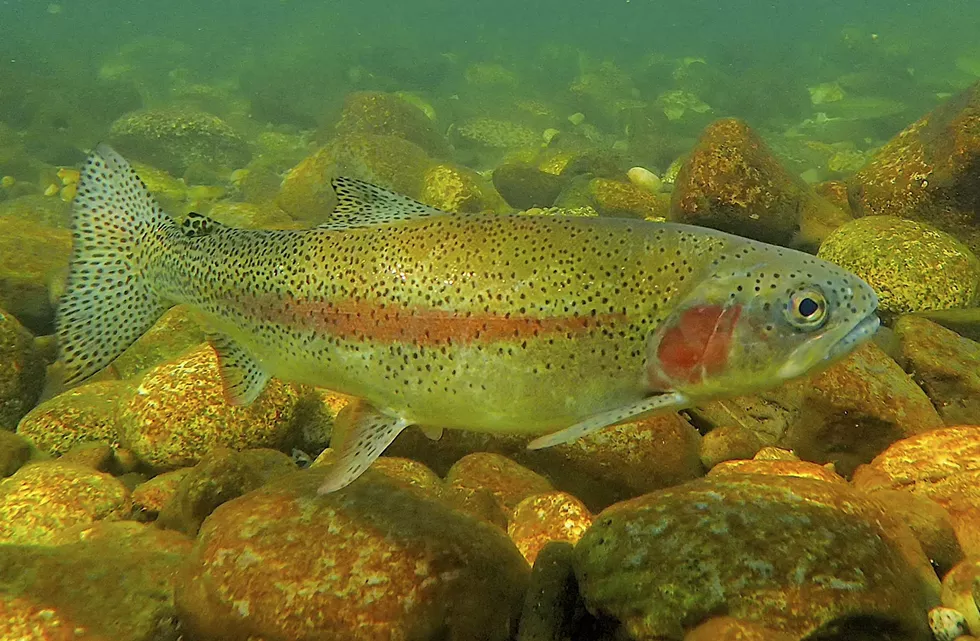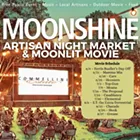Fifteen years ago, when I was ready to escape the boredom and chlorinated air of indoor swimming pools, a friend introduced me to "The Big Eddy" in west Spokane. Surrounded by bare, dunelike hills to the west and pine-covered slopes to the south and east, the "Eddy" is a majestic opening in the river about a mile downstream of the T.J. Meenach Bridge.
I remember one of my first conversations on the bank. A woman with sunglasses saw me putting on my swim cap. "Iron man?" she called out.
"Tin man," I replied.
I adjusted my goggles and dove in. My routine was to swim back and forth across the widest part of the bowl, peering into a dark abyss at one of the deepest parts of the river. As there are now, there were schools of mountain whitefish, osprey circling overhead and, along the shoreline, garter snakes preying on minnows and cedar waxwings fly-catching from the limbs of a hawthorn. It was a week or so before I saw my first redband trout, cruising against a rocky face not far from where I'd stashed my bike on the bank. Though the light was marginal I could see its colors and admire its hydrodynamic form.
To be clear, it's hard to compare any northern aquatic adventure to the lush experience of diving on a healthy coral reef. I grew up in the tropics. There's a dreamlike quality to submerging in Caribbean warmth, taking in the bold yellows and blues of the tangs and the surreal blends of colors emanating from wrasses and parrotfish. It can be so pleasant you may wonder if it's legal.
My introduction to the realm of the wild redband (Oncorhynchus mykiss gairdnerii) was not nearly so comfortable. The portal to a visit with redbands comes with an entry jolt from the frigid water that defines their habitat. It's not for everybody but, at least for me, the beauty of this remarkable creature is irresistible. Its colors are exotic, especially in sunlight — a brilliant, metallic-green body, with dark speckles from tail to snout, a Jackson Pollock splash of scarlet covering the gill plates and striping the flanks.
That single experience — of getting close enough to this magnificent fish to admire its character and physique — began to change the way I thought about being in the river. I stopped swimming laps across the bowl and began swimming upstream to a staircase of rapids, where I knew I would see more trout. I started wearing flippers instead of water shoes, and eventually put away the goggles in favor of a mask and snorkel. I brought a waterproof camera that I could leash to my neck.
As with other variants of rainbow trout, redbands are among the fastest of the freshwater fishes. When they decide to go, they quickly reach speeds over 20 feet per second — five times faster than my best sprints as a former teenage swim racer. More importantly, they have grit and character poetically in sync with the force and flow of the upper Spokane, a river that was badly abused for most of a century before finally getting some much-needed love in the run-up to Expo '74 and the half-century since. The river's resurrection is arguably Spokane's finest civic achievement. It's fitting that a stable population of wild redband is the living symbol of the progress we've made.
That I could pursue an experience like this is a small miracle built upon a tragedy. It's doubtful humans will ever again see the Spokane as it existed before the completion of Little Falls Dam in 1910. Before then, the river's prolific chinook salmon runs provided vital sustenance for Native Americans throughout the Inland Northwest, and the Spokane Falls were a traditional gathering point in early summer. Redbands are salmonids, genetic descendants of the once-abundant steelhead prized by Native Americans and white pioneers. The dams providing electricity for the growing city put an end to the salmon runs and steelhead fishery, and the river deteriorated as an open sewer.
It wasn't just the fish that took a beating from the pollution. In the early 1900s there were dozens of cases of typhoid due to people ingesting contaminated water. The city averted a larger public health crisis because it was able to quickly tap into its recently discovered aquifer. If there was a downside to that stroke of good fortune it was to dampen any sense of urgency to curtail the surface water pollution. In 1935 the state Health Department classified the river as "grossly polluted."
How the redband and other fishes survived the trashing of the Spokane is a curiosity. I put the question to Chuck Lee, a biologist with the Washington Department of Fish and Wildlife who grew up in Spokane and, like me, has spent hours snorkeling in the river and enjoying encounters with wild redbands. He now studies them as part of his job.
"Regardless of what we've done to them, they still persist here, which is pretty amazing."
"When you think about salmonids in particular, you never think about how strong those fish are or how resilient they are," Lee said. "They fight really hard, but once you get them out of water, they're not super tough fish. Some fish, you throw them in your trunk for a day and a half, and you put them back in water, they start to swim away. Redband aren't like that, but they have been resilient over the years as far as dealing with changes to the environment, degraded habitat and degraded water conditions. Regardless of what we've done to them, they still persist here, which is pretty amazing."
Genetically, Lee added, Spokane redbands retain their steelhead encoding despite losing their access to the ocean, and in spite of the introduction of hatchery spawned trout. It turns out these wild fish prefer to spawn with other wild fish. Thus, Lee said, their genetic profile is stable: "We don't see a lot of introgression [hybridization]."

OSCAR THE TROUT
After living in Spokane for most of 30 years, the wild redband was a fish I wanted to get to know — not just glimpse, but actually swim with. As a rule, let's just say this is not what wild trout have in mind when they encounter a human in the water. Most of the time, they bolt when being approached. But my early, chance encounter with the sauntering redband was a signal to be both patient and creative, something I've also had to learn in order to get close enough to photograph wild birds, rattlesnakes or badgers.
I met "Oscar" a year ago in August. He was in the best place I could hope to find a fish that would tolerate my presence — in the rapids. The fast-flowing water offers the most photogenic setting, in part because the current scours the riverbed cobbles of algae, exposing their texture and colors. Redband don't form schools, but they do congregate to feed. And as Lee noted, from his own experience swimming with redbands, they favor particular spots along the riverbed where — in the braids of the turbulence — they can better hold themselves against the current to hunt.
The complication for me is that I'm not a fish. Even with fins, I can only briefly hold my own in the teeth of a strong current before being swept backwards. The rapids upstream of the Big Eddy are tilted in such a way that the current shifts toward the north bank before straightening out into deeper water. This at least allows me to escape the full force of the current at a rocky ledge on the south side. From there I can observe the redbands lining up to feed to my left, illuminated by the afternoon sun on my right. When I sense an opportunity, I shove off into brunt of the current, finning as vigorously as I can, working to get parallel to a trout, for the one or two seconds it takes to line up the camera before the fish brusquely curls away, usually to circle back in a long loop to reassume its spot along the riverbed.
That's the usual dance. But Oscar was different. He was far less skittish than the other redbands that congregated to feed at the rapids. By appearance, he was an older fish with a puncture scar (almost certainly from a fishhook) on the right side of his face. As often as not, he would let me swim alongside until I could no longer hold my position or my breath. I swam with him until mid-October, when my heightened risk of hypothermia became an issue. I doubted I would see him again. He was a bit underweight for his length, and when our eyes would meet I had the sense he'd seen it all; that while he was wary he was not afraid. He would sometimes drift away to my left, but never bolt.
ENTER GORDO
When I returned to the river this June, I did so without a camera at first. The river is always changing, and the power of the spring runoff often carries new hazards — one year it was a full-size shopping cart — that I have to recognize and avoid being swept into by the current. On my first swim up to the rapids I was encouraged to find a ragged chorus line of several surprisingly large and buff redbands hunting near the surface, swirling like flags in the wind. I was disheartened, though not surprised, that Oscar was not among them. I practiced my release from the rocks into the current to see how quickly I could get down to the river bottom, to see how the new fish would react to me. They all bolted.
By the end of July, I had only a couple photographs comparable to those I'd been able to get of Oscar the year before. And then Gordo appeared, seemingly out of nowhere, literally within a few yards of where I stow my water bottle while I swim. (As with Oscar, I use the male pronoun and names lightly, as it's not easy to tell a male from a female without close examination. "Oscar" comes from The Odd Couple. "Gordo" from The Right Stuff.)
For eight of nine days in mid-August, I was able to find and swim with this preternaturally relaxed wild redband. Sometimes I'd see him right away, other days I'd have to circle the small cove for a few minutes before he would appear on the bottom, some 10 or more feet below me, seemingly out of nowhere. It is very unusual behavior for a redband to be so punctual, then to let a person swim so closely. Most of the time I was tailgating, trying to keep pace from behind, surfacing regularly to suck air through my snorkel, and patiently waiting for Gordo to turn so I could try to photograph at least one eye, the brilliant colors on his flanks and signature, white-tipped pelvic fins.
There are other wild things at the Big Eddy, including the other people who like to hang out in the amphitheater-like setting, sunshine and shade from the trees, the warm dry air above the biting cold water. It can be crowded on weekends, families with small children and camp chairs, tents and boom boxes. The current brings in parades of all sort of motorless watercraft. When I got out of the water on a recent Saturday I was greeted by five dogs. On quieter days, moose will sometimes take a soak nearby, sharing the space with cormorants and large broods of mergansers. Still, nothing is quite as wild as swimming with a redband trout.
The river in west Spokane gets colder and clearer as the summer progresses and the fraction of aquifer-fed spring water increases. By late summer, the aquifer provides the dominant portion of the flow. But the low flows are a growing concern, one of many that people who work daily to monitor and care for the river's health are rightly concerned about. In short, the more water we draw from the aquifer to water our lawns, the less flow we have for the river.
The fish would want me to share that with you, as would Jerry White, the hardworking former Spokane Riverkeeper who sometimes joins me with a snorkel and a mask.

ONE MORE SWIM
I'll turn 67 before the end of this year. One reason I swim in the river is I have rheumatoid arthritis. The cold water immersions are energizing and soothe the inflammation in my joints. Because of the physicality it requires to do photography in fast-flowing water, I don't take next year's swims for granted. When Oscar and I last looked each other in the eyes, a year ago, I sensed he could see my scars too, as one old swimmer to another.
I have a deep appreciation that this ephemeral miracle is enabled by the devotion of people who are as much in love with this river as I am.
I have a deep appreciation that this ephemeral miracle is enabled by the devotion of people who are as much in love with this river as I am. To cite but a few, it's about the work of the Spokane and Coeur d'Alene tribes, Jerry and the remarkable Spokane Riverkeeper team, the Lands Council, and the Sierra Club's Upper Columbia River chapter. I'll add a final note of appreciation for my late friend Mike Taylor, a venerable civic leader and engineer who guided the latest major effort to give the city its state-of-the-art sewage treatment plant.
It is an intergenerational effort by now to restore the river, to make it healthier for the redband to live in and for me and other creatures to swim in. It gives me hope that someday at least one of my grandchildren will swim not just with a descendant of Oscar or Gordo, but with an ocean-visiting steelhead or chinook. When that day comes, I hope she or he will write about it. ♦
Tim Connor is an award-winning journalist and nature photographer based in Spokane. His latest book is Beautiful Wounds.












